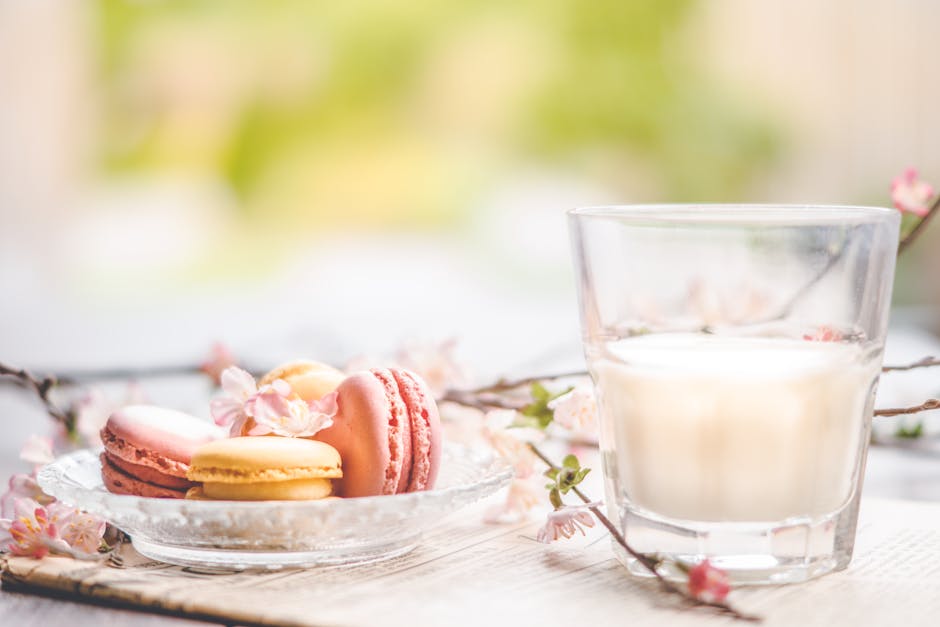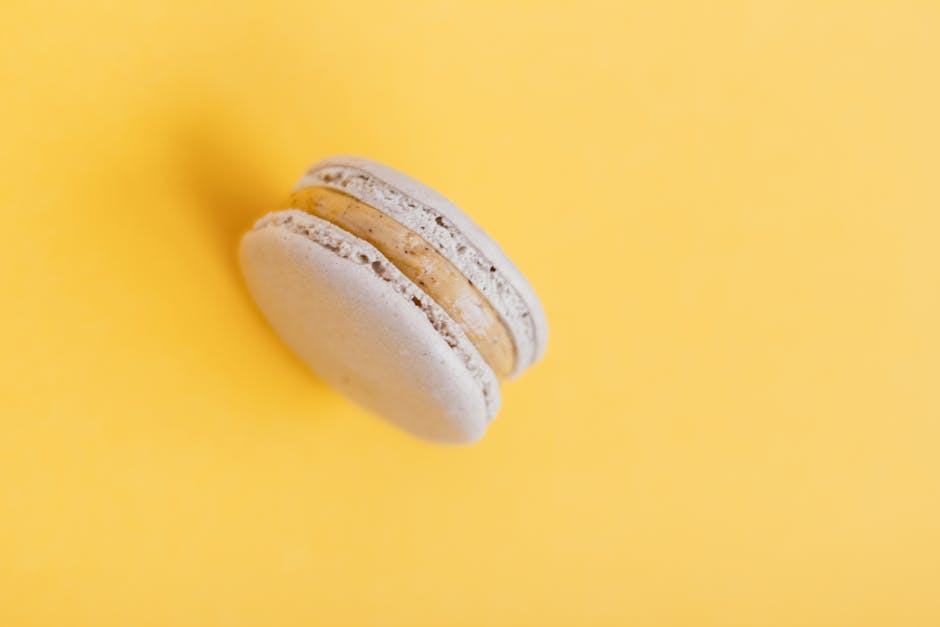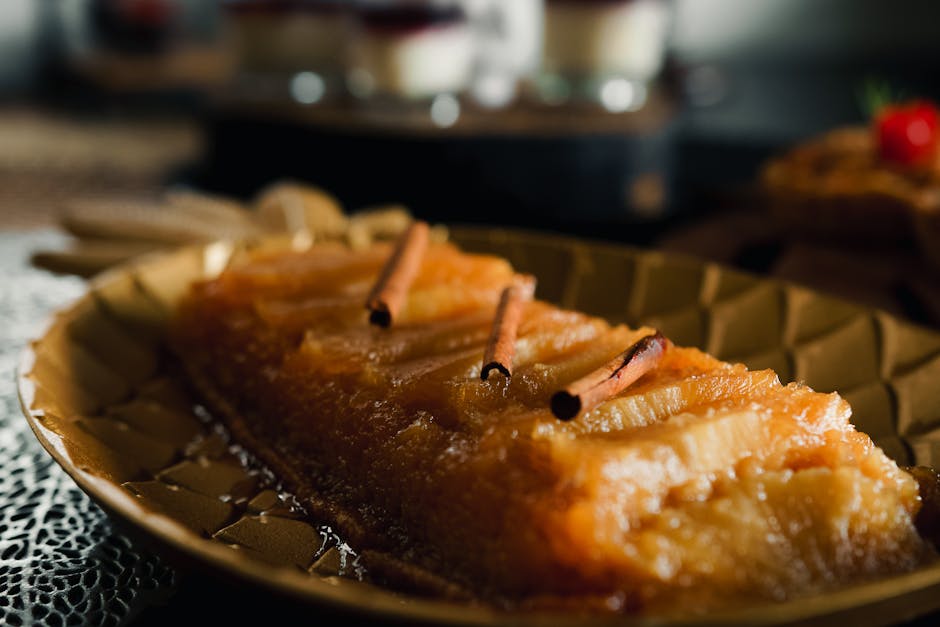The delicate, jewel-toned discs of the perfect French macaron are more than just a pretty face; they represent a culmination of centuries of culinary artistry and cultural significance. Originating in Italy during the Renaissance, these almond meringue-based confections made their way to France in the 16th century, finding a home in the kitchens of royal courts and eventually evolving into the refined treats we know and love today. While the exact origins are debated, early versions were likely simpler, lacking the signature smooth shells and vibrant fillings that characterize modern macarons. Their popularity wasn’t immediate; it took several centuries for the recipe to be perfected, with key advancements occurring during the 18th and 19th centuries.
The rise of the macaron to its current status as a global culinary icon is a testament to its enduring appeal. The iconic foot or ruffled edge, a hallmark of a perfectly baked macaron, is a result of precise meringue preparation and baking technique. Achieving this delicate texture is a challenge even for experienced pastry chefs, contributing to the macaron’s reputation for being a sophisticated and somewhat elusive dessert. In fact, a significant percentage – as high as 30-40% – of macaron attempts are considered failures due to the complexity of the recipe. This high failure rate only enhances their prestige and the satisfaction of creating a flawless batch. The seemingly simple ingredients—almond flour, egg whites, sugar, and often a flavored ganache or buttercream filling—mask the intricate balance required to achieve the perfect texture and flavor.
Beyond its technical challenges, the macaron holds considerable cultural significance in France and beyond. It’s frequently associated with celebrations, special occasions, and high-end patisseries, becoming a symbol of luxury and refined taste. The vibrant colors and diverse flavors—from classic pistachio and chocolate to more adventurous combinations like salted caramel and lavender—allow for a level of artistic expression that elevates the macaron beyond a simple dessert. The global macaron market is estimated to be worth billions of dollars, highlighting the enduring popularity and economic impact of this tiny, yet mighty, confection. From its humble beginnings in Renaissance Italy to its current status as a globally recognized delicacy, the story of the French macaron is one of refinement, innovation, and undeniable charm.
Ingredients and Measurements
The precision of your measurements is paramount to achieving perfect French macarons. Even slight variations can significantly impact the outcome, leading to cracked shells, hollow interiors, or uneven feet. Therefore, using a kitchen scale is strongly recommended over volume measurements (cups, spoons, etc.). A digital scale offers the necessary accuracy for consistent results.
For this recipe, we’ll be making approximately 30-36 macarons, depending on the size of your piping nozzle. Adjust quantities proportionally if you need more or less.
Dry Ingredients:
Almond Flour (Powdered): 100g (3.5 oz): Use finely ground almond flour, also known as almond powder. Avoid using almond meal, as its coarser texture will result in a less smooth and elegant macaron. Sift the almond flour at least twice before using, to remove any lumps and ensure a fine, consistent texture. This is crucial for achieving a smooth batter and preventing cracks.
Powdered Sugar: 100g (3.5 oz): Use high-quality powdered sugar. Again, sift the powdered sugar twice with the almond flour. This step is essential to remove any lumps and ensure a smooth mixture, contributing to a flawless macaron shell. Sifting also helps to aerate the dry ingredients, leading to a lighter final product.
Granulated Sugar: 100g (3.5 oz): This will be used in the meringue. Use a fine granulated sugar for optimal dissolving and preventing crystallization in the meringue. The quality of sugar can have a subtle effect on the final taste and texture.
Wet Ingredients:
Egg Whites (Large): 4 (approximately 110g – 120g): Use fresh, room-temperature egg whites for optimal volume and stability. Make sure there is absolutely no yolk in the egg whites, as even a tiny trace of yolk can prevent them from whipping to stiff peaks. Room temperature is vital for proper whipping.
Water: 25g (0.88 oz): This will be used in the sugar syrup. Precise measurement is important for achieving the desired texture and consistency of the meringue. Use filtered or bottled water for the best results.
Gel Food Coloring (Optional): A few drops of your desired gel food coloring. Gel food coloring is preferred over liquid food coloring as it doesn’t add extra moisture to the batter, which can negatively affect the macaron’s texture. Add it to the meringue after it’s reached stiff peaks.
Filling (Recipe not included in this section):
The filling recipe is not included in this ingredient list, as this section only focuses on the ingredients needed for the macaron shells themselves. Many delicious fillings can be used, from ganache to buttercream, fruit curd, or jam.
Important Note: These measurements are guidelines. Minor adjustments might be needed depending on your altitude, humidity, and the type of ingredients you use. Always weigh your ingredients to ensure consistency and success in your macaron-making journey.
Macaronage Technique
Macaronage is the crucial step that separates beautiful, flawless macarons from cracked, uneven shells. It’s the delicate process of folding your meringue into your almond flour mixture, creating a batter with the perfect consistency. This seemingly simple step requires patience, precision, and a good understanding of the batter’s behavior. Get it right, and you’re on your way to macaron perfection; get it wrong, and you’ll be starting over.
Before you begin macaronage, ensure your ingredients are at room temperature. This is crucial for proper emulsification and achieving the desired texture. Cold ingredients will result in a stiff, unyielding batter, while excessively warm ingredients can lead to a runny, overly spread batter. Aim for a room temperature of around 70-75°F (21-24°C).
The goal of macaronage is to incorporate the meringue into the almond flour mixture without deflating it completely. You want a batter that flows like lava – thick enough to hold its shape, but liquid enough to easily fall from the spatula in ribbons. This ribbon stage is your benchmark for perfect macaronage.
The Process: Begin by gently folding the meringue into the almond-sugar mixture using a large spatula or flexible scraper. Do not stir! Stirring incorporates too much air and will lead to flat macarons. Instead, use a folding motion, cutting down through the batter, scooping up a portion from the bottom, and gently folding it over the top. Rotate the bowl as you fold to ensure even incorporation.
Number of folds: The number of folds required varies depending on the recipe and the consistency of your meringue. Generally, it will take between 25-50 folds. Don’t count religiously; focus on the texture and consistency of the batter. Avoid over-mixing. Over-mixing will result in a thin batter that will spread excessively during baking, creating flat, uneven macarons.
Testing the consistency: The classic test is the ribbon test. Lift your spatula and let the batter fall back into the bowl. It should fall in a slow, thick ribbon that slowly melts back into the batter, taking around 15-20 seconds to disappear. If it falls in a thin ribbon that disappears instantly, you’ve over-mixed. If it falls in a thick clump that doesn’t melt back in, you haven’t mixed enough.
Troubleshooting: If your batter is too thick, add a teaspoon of meringue at a time and continue folding gently. If it’s too thin, add a small amount of dry almond-sugar mixture, but be careful not to add too much, as this can make the batter too stiff.
Professional Recommendation: Practice makes perfect! The best way to master macaronage is through practice. Don’t be discouraged if your first few attempts aren’t perfect. Each batch will help you better understand the feel and consistency of the batter. Pay attention to the subtle changes in texture and adjust your technique accordingly.
Important Note: The environment also plays a role in macaronage. High humidity can affect the batter’s consistency, making it harder to achieve the optimal ribbon stage. If the humidity is high, you might need to adjust your mixing time accordingly. Experiment to find what works best in your kitchen.
Meringue Preparation: The Foundation of Perfect Macarons
The meringue is the backbone of a successful French macaron. Its texture and stability directly impact the final shell’s crispness and signature feet. Achieving the perfect meringue requires precision and attention to detail. This section outlines the process, highlighting crucial steps for optimal results.
Begin with impeccably clean equipment. Any trace of fat, even a tiny droplet of oil, will prevent the egg whites from whipping properly. Use a spotless, grease-free bowl and whisk. Preferably, use a stand mixer with a whisk attachment for consistent results, but a hand mixer can work if you’re diligent.
Separate your eggs carefully. Separate 100g (about 4 large) egg whites into the prepared bowl, ensuring absolutely no yolk contaminates the whites. Even a tiny speck of yolk can hinder the whipping process. It’s best to separate the eggs one at a time over a separate bowl to catch any errant yolk.
Whip the egg whites to soft peaks. Begin whipping the egg whites on a low speed to incorporate air. Gradually increase the speed to medium-high as the whites start to foam. Avoid high speed at this stage as it can incorporate too much air too quickly, leading to an unstable meringue.
Gradually add the sugar. Once soft peaks form (the whites should hold their shape but still be somewhat soft), gradually add 150g of superfine granulated sugar. Adding the sugar gradually is crucial. It allows the sugar to dissolve completely, creating a glossy, stiff meringue. Add the sugar a tablespoon at a time, making sure each addition is fully incorporated before adding more. Continue whipping until stiff, glossy peaks form. The meringue should be firm enough to hold its shape when you lift the whisk.
Achieving the perfect consistency is key. The meringue should be stiff and glossy, but not dry. A properly whipped meringue will hold its shape when you turn the bowl upside down (although this should be done carefully!). Over-whipping can create a dry meringue that results in cracked macaron shells. Under-whipping will lead to unstable shells that may collapse.
Optional: Add flavoring. Once the meringue is fully whipped, you can add flavoring extracts (vanilla, almond, etc.) or even a touch of food coloring. Gently fold these in using a spatula, being careful not to deflate the meringue.
Handle with care. Once the meringue is ready, use it immediately. Letting it sit for too long can cause it to lose its structure. Begin incorporating the almond flour and powdered sugar mixture as soon as the meringue is complete to ensure the best results.
Following these steps meticulously will ensure you have a perfect meringue, which is the foundation for flawless French macarons. Remember, practice makes perfect, so don’t be discouraged if your first attempt isn’t flawless. With each batch, you’ll refine your technique and create increasingly beautiful and delicious macarons.
Baking and Cooling
Baking French macarons is a delicate process requiring precision and attention to detail. The oven temperature and baking time are crucial factors in achieving that signature delicate crisp shell and chewy interior. We recommend using a convection oven if possible, as it provides more even heat distribution. If you don’t have a convection oven, ensure your oven is calibrated accurately, as temperature variations can significantly impact the outcome.
Preheat your oven to 300°F (150°C) for at least 30 minutes before you begin baking. This ensures a stable baking environment. Line your baking sheets with parchment paper. Do not use silicone mats, as they can lead to uneven baking and potentially soggy macarons. Draw 2-inch circles on the parchment paper using a food-safe marker as a guide for piping consistent macarons. This will ensure even baking and a uniform appearance.
Once your macaron batter is ready (following the preceding section’s instructions), carefully transfer it into a piping bag fitted with a round tip (approximately 10-12mm). Pipe 2-inch circles onto your prepared baking sheets, leaving about ½ inch between each macaron. Gently tap the baking sheet several times on the counter to release any trapped air bubbles and ensure a smooth surface. This step significantly reduces the likelihood of cracked shells.
Let the piped macarons sit at room temperature for 30-45 minutes, or until they develop a skin. This resting period is vital. You should be able to lightly touch the surface and not have the batter stick to your finger. This skin formation is essential for preventing the macarons from cracking or spreading during baking. The environment should be dry and relatively still during this resting period; avoid drafts or humidity. The time may vary slightly depending on the humidity and temperature of your kitchen.
Carefully slide the baking sheets into the preheated oven. Bake for 12-15 minutes, rotating the baking sheets halfway through for even baking. The baking time is highly dependent on your oven, so keep a close eye on your macarons. They should be lightly browned around the edges and have a firm shell when gently touched. Do not overbake; overbaked macarons will be dry and brittle.
Once baked, carefully remove the baking sheets from the oven and let the macarons cool completely on the baking sheets for at least 30 minutes before attempting to remove them. Do not try to peel them off while they are still warm, as this will cause them to break. After 30 minutes, gently peel the macarons from the parchment paper. If they stick, let them cool for a little longer.
Once completely cool, you can carefully pair your macarons, filling them with your chosen buttercream or ganache. Proper cooling is essential for preventing the filling from melting and ensuring the macarons retain their delicate texture. Store your finished macarons in an airtight container at room temperature for up to 3 days, or in the refrigerator for up to a week. They are best enjoyed fresh!
Shell Filling and Assembly
Once your macaron shells are perfectly baked and cooled, the exciting part begins: filling and assembling your exquisite French macarons. This stage requires precision and a gentle touch to avoid damaging the delicate shells. The success of your macarons hinges not only on the perfect shell but also on the harmonious balance of shell and filling.
Prepare your filling: Before you begin assembling, ensure your chosen filling is ready. Whether it’s a classic buttercream, a tangy ganache, or a light and airy curd, make sure it’s smooth, at the right consistency, and at room temperature. A filling that’s too cold will be difficult to pipe, and one that’s too warm might melt the shells. For a standard batch of macarons (approximately 30-40 shells), plan on approximately 1-1.5 cups of filling, depending on your desired filling-to-shell ratio.
Piping the Filling: The most efficient method for filling macarons is using a piping bag fitted with a round tip (approximately 8-10mm). This allows for consistent filling amounts and a neat finish. Avoid overfilling; too much filling will cause the macaron to become unstable and messy. A good rule of thumb is to pipe a dollop of filling slightly smaller than the diameter of the macaron shell. Remember to keep the piping bag close to the shell for a smooth, even application.
Pairing the Shells: Once the filling is piped onto one shell, carefully top it with another shell, ensuring it aligns as closely as possible. Gently press down on the top shell to create a slight seal, but avoid squeezing out filling or crushing the delicate shells. A slight pressure is sufficient to bind the two shells together. If the shells don’t match perfectly in size, choose the closest pairs for the most aesthetically pleasing results.
Matching Shells: For a professional finish, aim to pair shells of similar size and color intensity. This ensures a visually appealing uniformity across your batch. It’s fine to have minor variations, but try to avoid pairing significantly different sized or colored shells. Take your time and carefully select the best pairings. Having a variety of sizes doesn’t necessarily ruin the macarons, but having uniformity is aesthetically pleasing.
Resting the Assembled Macarons: After the macarons are assembled, allow them to rest at room temperature for at least 30 minutes. This allows the filling to settle and the flavors to meld. Avoid refrigerating immediately, as this can cause the shells to become soggy. After the resting period, you can refrigerate your macarons for up to 2-3 days, though it’s best to enjoy them fresh for the optimal texture and flavor.
Troubleshooting: If you find your filling is too runny, try adding a bit more powdered sugar or butter to thicken it. If it’s too thick, add a touch of liquid (milk, cream, or fruit purée depending on the filling). If your shells are cracking during assembly, they may be too dry. Next time, try reducing the baking time slightly or increasing the humidity in your oven.
Presentation: Finally, arrange your beautiful macarons on a serving platter or in a box. Consider using parchment paper or a decorative liner for added visual appeal. Enjoy the fruits of your labor!
Troubleshooting Your Perfect French Macarons
Making French macarons can be challenging, but don’t be discouraged by initial setbacks! Many issues stem from seemingly small details. This troubleshooting guide will help you diagnose and fix common problems.
Macaron Feet: Absent or Too Small
Problem: Your macarons lack the characteristic feet, those ruffled edges that indicate proper baking. They may appear flat and spread too thin.
Possible Causes:
- Insufficient whipping of the meringue: The meringue wasn’t stiff enough. Aim for stiff peaks that hold their shape when you lift the whisk. Whip for at least 8-10 minutes with a stand mixer, ensuring the sugar is completely dissolved.
- Overmixing the macaronage: You overmixed the meringue and almond flour mixture, deflating the air bubbles. The batter should flow like lava, slowly falling from the spatula in a ribbon. Stop mixing immediately when it reaches this consistency – about 25-30 gentle folds.
- Oven temperature too low: A low oven temperature can prevent proper expansion and foot formation. Ensure your oven is calibrated accurately and preheated to the correct temperature (285-300°F or 140-150°C).
- Old or stale ingredients: Using older egg whites or stale almond flour can negatively impact the batter’s texture and ability to rise.
Solutions: Ensure your meringue is stiff, practice the macaronage technique carefully, preheat your oven thoroughly, and use fresh ingredients. For a gentler oven, consider reducing the temperature by 10°F (5°C) and extending the baking time slightly.
Cracked Macarons
Problem: Your macarons have cracks on their surface.
Possible Causes:
- Oven temperature too high: The outer shell sets too quickly before the inside is cooked, causing cracks to form. Reduce oven temperature by 10-15°F (5-8°C).
- Macaron batter too dry: The batter may be too dry and lacks enough moisture to hold its structure as it bakes. Add a few drops of water (1-2 drops at a time) to the batter and gently fold to rehydrate.
- Overbaking: Overbaking leads to dryness and cracking. Reduce baking time by a minute or two and monitor closely.
- Uneven baking: Hot spots in the oven can cause uneven baking and cracking. Rotate your baking sheet halfway through baking.
Solutions: Lower your oven temperature, check the consistency of your batter, and carefully monitor baking time. Rotate the baking sheet for even baking. Consider using a baking stone or sheet pan to distribute heat evenly.
Hollow Macarons
Problem: Your macarons have a hollow center, suggesting insufficient filling.
Possible Causes:
- Underbaking: The inside hasn’t set properly. Increase baking time by a minute or two, keeping an eye on the color.
- Insufficient oven temperature: The macarons haven’t baked thoroughly enough to create a firm structure. Ensure your oven is calibrated accurately and preheated to the correct temperature.
Solutions: Increase baking time slightly until the macarons are fully cooked and firm to the touch. Double-check your oven temperature and calibrate if necessary.
Important Note: Consistency is key. Weigh your ingredients rather than using volume measurements for the most accurate results. Practice makes perfect! Don’t be discouraged if your first batch isn’t flawless. Keep experimenting and refining your technique.
Perfect French Macarons: Recommendations
Serving Suggestions: These delicate pastries are best enjoyed at room temperature to allow the flavors to fully develop. Allow them to sit at room temperature for about 15-20 minutes before serving. Their delicate texture is best appreciated when they’re not too cold. For a truly luxurious experience, serve them on a pretty plate or tiered stand, perhaps with a small garnish of fresh berries or edible flowers. Consider offering a selection of different flavors to your guests for a truly impressive display.
Storage Conditions: Proper storage is crucial for maintaining the quality and texture of your macarons. Store your macarons in an airtight container at room temperature for up to 3 days. Avoid storing them in the refrigerator, as the cold, humid environment can cause the shells to become soft and lose their crispness. If you need to store them for longer, consider freezing them. Freeze macarons individually on a baking sheet lined with parchment paper, then transfer them to a freezer-safe bag or container for up to 2 months. Thaw them at room temperature before serving.
Complementary Dishes: Perfect French macarons are wonderfully versatile and can be enjoyed in various settings. They make a delightful addition to an afternoon tea party, paired with a pot of Earl Grey tea or a delicate floral blend. They also complement stronger coffees and espressos, offering a sweet counterpoint to the bitterness. For a more substantial pairing, consider serving them alongside a light dessert, such as a fruit tart or a scoop of artisanal ice cream. The combination of the crisp macaron shell and the creamy filling creates a delightful textural contrast. A glass of chilled champagne or dessert wine can also elevate the macaron experience.
Nutritional Information (per macaron, approximate values, may vary based on filling): The nutritional content of a macaron depends heavily on the specific recipe and fillings used. However, a typical macaron (approximately 25g) might contain roughly: Calories: 100-150; Fat: 5-8g; Saturated Fat: 2-4g; Carbohydrates: 15-20g; Sugar: 10-15g; Protein: 1-2g. These values are estimates, and the actual nutritional content may vary depending on the specific ingredients used in the recipe. For more precise information, consult the specific recipe employed.
Important Notes: Always handle macarons gently to avoid damaging their delicate shells. Avoid stacking them too high in storage to prevent crushing. Remember that the taste and texture of your macarons will vary slightly depending on the quality of ingredients used. Experiment with different flavors and fillings to find your personal favorites! Enjoy!





